“My songs have nothing to do with war. They are all about the sad insecurities of a balding rock star”
– Chris Martin (The Guardian 17 March 2003)
I picked a piece off of a painting and painted the hole red. It looked like a small wound in flesh. The surface had been afflicted. It was a small wound, it could be construed to have been caused by a sharp stick. There were also scratches, quite deep I suppose. There was a slight translucency in the layers of oil, which spoke to me of a sort of bruising. Once, when I was using my sisters stilts, I slipped. There was a rusty screw sticking out of the handle, and it stuck me hard in the shin. It made a hole right into the bone, quite deep. I never talked about it because of the fear of going to hospital.
Minimal damage.
Contained.
My painting spoke nothing of the carnage that was created and endured at that time. Perhaps that was not the objective. Perhaps that was simply too big to consider. But as a hole in a dam, a picked scab, the injury beneath a toyed with, nuisance piece of loose skin grew and grew: Visually, physically, contextually. I engaged with that initial hole, that small puncture wound. It was the beginning of an obsession with surface and texture, with representation and literalism that would endure till the present.
This is Part 1 of a post about that preoccupation. I write it as my work “Elegy” hangs on the Art/Artefact II exhibition at Gallery Delta, a work a long way from the painting described above. I don’t think I can really speak about it without writing of one element of it’s history, which is what I shall endeavour to do here. I will post the second part next week. (The painting with the hole (Scratching the Facade) formed part of the 2005 exhibition “Embers of Dreams”.
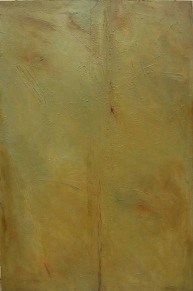
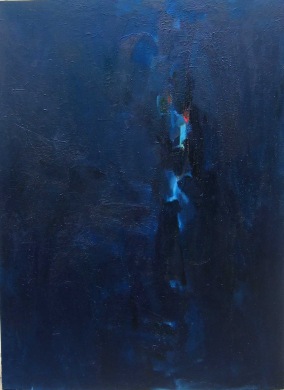
Between then and the present lie a collection of stories of corrupted foundations, damaged structures, isolation, wounds and destruction. Stories of despair, defence, of light, of patience. Of burning, embers and ash. Not ash. Ash has less value – it is a symbol of something departed – it is hard to work with, grey, lacking contrast, lacking substance. Stories that end with charcoal. Charcoal is different. It has another quality; It’s dense, black. It has substance. It possesses the power to be rekindled. Charcoal is potential.
As the wounds grew, so did the necessity to represent them. The acrylic/plaster base became insufficient for the task. Scratches and punctures were no longer the nature of the environment. In search of a sense of greater depth, I took to ripping and layering pieces of canvas, still incorporating the earlier base. There was a transformation taking place; what began as a representation of a wound, gave way to an actual rip and tear. The surfaces which had until now seemed to form a bridge between the abstract and the figurative became literal embodiments of the ideas about which I was thinking. I didn’t ever name the parts, though the surfaces seemed to reflect different aspects. In one a type of skin, in another, panels or rusted metal, in a third burnt panels, broken, insufficient to cover or piece together the carnage. I worked on numerous pieces at a time, as over the layers of canvas, were numerous layers of oils – glaze upon glaze. I think that they had a richness and depth, from memory they were strong, resonant images. Amidst them were moments of light, of dreaming an hope.
The works below are of that era. They were part of the 2007 solo exhibition “The Valley of the Shadow”.
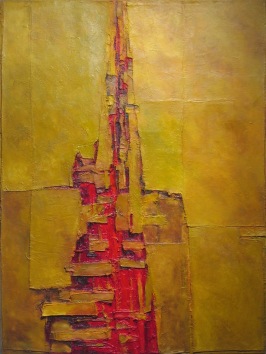

The culmination of these ripped and layered works ended with: “Enough Said”. What a load of crap. An total misnomer. As if there could have ever been enough said.
List of paintings that I can think of that (when standing alone) are truly able to describe horrific moments:
1. Guernica.
Not that I would rename it, it was a good title. I think for me it was enough said. It marked the end of a two and a half year obsession with those stories, and those processes. It was painted for the 2008 HIFA exhibition, “determine: Nation”, at the National Gallery. At almost two metres in height, it was somewhat overbearing, the colours were strong, the composition had some tension. It remains for me a really significant painting, one I am proud of.
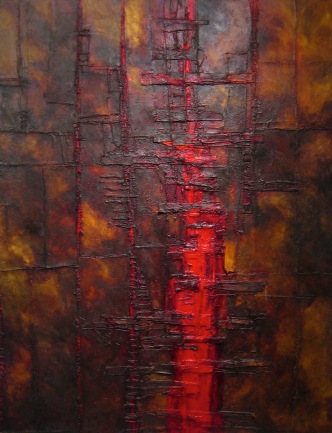
OBSERVATIONS
- The product DM6, was an acrylic base which dried into a transparent flexible and extremely tough surface. It had the added property of being extremely sticky. It was developed by Peter Eyllis of Pigmento, as far as I understand, with a certain amount of artistic input from his sister-in-law, the renowned artist Helen Lieros. It is a product no longer readily available.
- I now use the PVA “book-binding” glue from A.T. Carter. It is as good a water-based glue as any I have used in my career.
- Operation Murambatsvina/Drive Out Filth, also known as Operation Restore Order, was a wide-spread government clear-up (decimation) of informal settlements across the country in July 2005. According to Wikipedia, the United Nations estimated at least 700 000 people were directly affected, and over 2m indirectly affected through the campaign.
Studio One
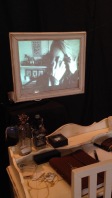
We are entering the really frantic period (more frantic that usual) of our academic year. The coursework deadlines are looming for the IGCSE students, and the Upper VI. Despite the high pressure, it is also one of the very exciting periods, as the student work peaks and the Final Outcomes are turned in. I spent last Saturday morning with some of the Form Fours. Isobel Fox presented her installation, a work entitled “Contamination”. It is a complex and intriguing work that will hopefully be included in the Hellenic exhibition next term. I have included a link to a tiny detail here: https://vimeo.com/139447880
Greg Shaw, 21 August 2015.

Great art and a great post … thanks for sharing.
Thanks very much, thanks for looking too.